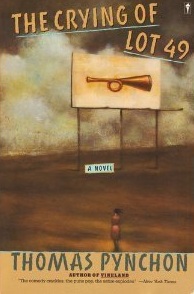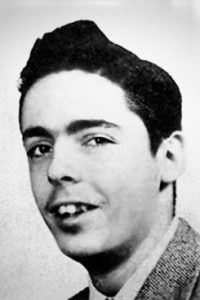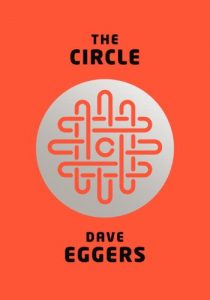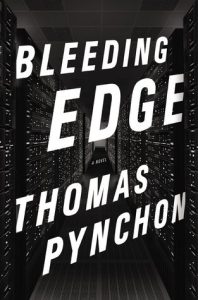Review By Dan Geddes
See also:
Gravity’s Rainbow,
Vineland,
Inherent Vice,
Bleeding Edge and
Dys, an imaginary Pynchon novel
___________________
The Crying of Lot 49, Thomas Pynchon’s second novel, pursues many of the same themes Pynchon explored in his first novel, V. In Lot 49, we are presented with historical mysteries and symbols that the protagonist cannot decipher. Nor can the protagonist even be sure whether the symbols mean anything, or are in fact a part of a great conspiracy.
In Lot 49, Oedipa Maas is the questing protagonist, the surprisingly chosen executrix of the will of her now-deceased ex-boyfriend, Pierce Inverarity. His name, like so many names in Pynchon’s works, is intended to suggest something—or is it? Inverarity, with its echoes of veritas, suggests something other than truth, perhaps the elusiveness of truth. Pierce, who leaves behind a vast, mysterious estate for Oedipa to sort out, reminds us of earlier proto-God figures such as the Father in Swift’s Tale of a Tub (whose sons, Peter and Martin, rewrite his will—The Bible—to suit their own ends), or Beckett’s Godot, who is also supposed to supply all the answers yet is incommunicado.
Lot 49 is largely a meditation on the failure of communication, both in the present, and between generations. As in V, it is impossible to know what really happened in history, or even to distinguish fact from forgery in historical texts. The central mystery in Lot 49 is the symbol of the muted horn, which appears linked to an underground mail system (known as W.A.S.T.E.), and is also associated with a mysterious historical group known as The Trystero. The muted horn (the stoppage of communication) appears on the postage stamp of the W.A.S.T.E. system, but also on old postage stamps—perhaps forged. Oedipa also discovers that the unmuted horn appeared on the stamps of the old Thurn and Taxis courier service, the official mail service of the Holy Roman Empire, until its demise. Lot 49 plays around with the indistinguishable mix of fact and fiction.
Oedipa’s investigation of the stamps, and sudden discovery of the muted horn symbol almost everywhere she goes, leads her to discover what appears to be a vast underground conspiracy—but she is not sure. Her research leads her to question her own sanity, and even to wonder whether Pierce Inverarity is merely playing a colossal prank on her—much like Mankind’s questioning for what purpose God created the universe. Oedipa’s struggle to know whether the muted horn has meaning dramatizes Man’s state of unknowingness.
Pynchon plays with the idea of communication in the present and in history through the central imagery of the postal horn and stamps (which are auctioned off as Lot 49 at the end of book). Mail represented the fastest means of long-distance communication until the implementation of the telegraph, and the birth of the information age. The mail system seemed an important enough channel for European powers to battle over (at least in some of Pynchon’s fake history texts), and also for the U.S. government to suppress the independent postal service that sprouted up in the West.
Technology geeks who work for Inverarity’s YoYodyne, Inc. communicate via the underground W.A.S.T.E. system. Meanwhile, electronic communication in Lot 49 is disjointed. Oedipa receives non-sensical telephone calls from both Inverarity, and from her psychotherapist, Dr. Hilarious. Later in a hotel room, she watches a movie on television with a 35-year-old lawyer, who was once a child actor in the same movie. She watches the movie, uncertain that the movie was actually shown as it was made—perhaps the lawyer arranged for an alternate ending just for her benefit. Conversations, such as between Oedipa and her lawyer Roseman, are weirdly disconnected.
Because his main themes are the unknowability of the universe and the limitations of communication, Pynchon need not supply the reader his any definite answers. He only poses difficult questions. Like many writers facing such themes, he seems to posit the necessity of our illusions to keep us going. Oedipa certainly wishes to regain her illusions after her discoveries shatter her sense of reality. Yet by the end, Pynchon provides no answers, only a comically dark portrait of his time (and perhaps Man’s condition).
#
The themes of truth and communication always hover over Lot 49, and invest it with much fodder for criticism. Not surprisingly, critics have rewarded Pynchon with great acclaim, perhaps unsurpassed by any living American novelist. His influence on other novelists, including Tom Robbins, John Irving, Jonathan Franzen, and many others, is clear. Yet Pynchon has remained inacessible to many readers, and has not enjoyed as much popular success as others who show traces of his influence.
While Pynchon should be lauded for tackling difficult themes, what is his real contribution, and why is Lot 49 considered such an achievement?
From the perspective of form, Lot 49 uses a simple Quest structure. Oedipa’s duty to serve as executrix takes her through a set of episodes. The episodes could have occurred in almost any order. Each of the episodes touches on the themes in some way, but the overall impression of the book is fragmented rather than unified (which supports Pynchon’s themes of fragmented truth, history, and communication).
The reader senses Pynchon’s glee in creating the book’s episodes. They display his cleverness, and wide-ranging knowledge of history, literature, and science. Moreover, many of them are very funny, working in the mode of black comedy; you can see his debt to Joseph Heller’s Catch-22. There are great comic moments here.
Pynchon is more “scientific” than many literary novelists, treating the impact of computers as early as 1965. The Maxwell’s Demon metaphor, whereby it is posited that one could theoretically achieve a perpetual motion machine by utilizing an effortless sorting of the molecules into hot and cold, is an apt metaphor for the book. Computers realize this efficient sorting, and so achieve the perpetual motion machine of the information age. Oedipa herself lives inside a sort of Maxwell’s Demon—all the clues she must sort out.
Pynchon has a special gift for creating fictional artifacts, perhaps best seen in a play that Oedipa attends, The Courier’s Tragedy. Pynchon’s tragedy satirizes Shakespeare, especially Hamlet. The Courier’s Tragedy is a bloodbath beyond even Titus Adronicus, with scheming and incest beyond Hamlet. Pynchon has fun with such excesses, but justifies the inclusion of this fragment in his work thematically. The play provides many of Oedipa’s most significant clues about the horn symbol and the mysterious Trystero. But the original text of the play is elusive; every edition of it she sees contains variant language, especially about the Trystero. When Oedipa asks, “Who was Wharfinger?” (the play’s author), she is answered with: “Who was Shakespeare?” There are no official texts and few biographical details, even about our greatest of poets.
Lot 49 is at base a collection of such doctored artifacts. Oedipa and Metzger watch Cashiered, a film about a British family during World War I who sneak a submarine through the Dardanelles to harass the Turkish fleet. The movie is described at great length, and contributes to Pynchon’s general climate of indeterminacy. Oedipa later encounters Mike Fallopian, a proselytizer for the Peter Pinguid Society, about a fictitious-historical Civil War captain. She also discovers possibly fake stamps, and many historical (but still untrustworthy) facts about Trystero. Also included are the lyrics of songs from The Paranoids, a rock band Oedipa encounters, and many other examples.
Pynchon, much like Oedipa in the Rapunzel myth in chapter 1, embroiders fictions in order to create order and make sense of the world. It is impossible to tell how true such fictions are, or what their ultimate meaning is. This is true both for Oedipa encountering fictions (perhaps all controlled by Inverarity), as well as for the reader encountering Pynchon’s text. Perhaps a lesson of Pynchon’s work is that it is far easier to create baroque fictions against a backdrop of grey indeterminacy than to communicate the unity and harmony suggested by so many writers before the late 19th century.
Pynchon is so obviously toying with his readers—humorously, but the fabrications take their toll on the readers’ credulity. Mike Fallopian cannot be a real character’s name. While that is the point, it also detracts from the reading experience. It is self-conscious writing. We keep reading (if we do, Pynchon’s naming scheme repels some readers), because Pynchon makes us laugh, creates memorable characters, and draws striking connections.
September 2002
See also:
Gravity’s Rainbow,
Vineland,
Inherent Vice,
Bleeding Edge and
Dys, an imaginary Pynchon novel









Be First to Comment